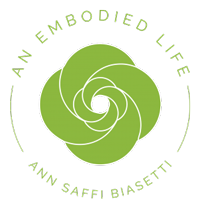Our current treatment for all eating disorders, anorexia, binge, and bulimia still primarily centers around behavioral and mind-based interventions, such as CBT and DBT treatment. Where these interventions are very effective for some, as we know they are not effective for all. As a somatic psychotherapist, what I find is a key missing component in all ED treatment is a form of somatic intervention.
Somatic interventions in the treatment of eating disorders tends to be poorly understood. Often when hearing the word “somatic” the mind tends to wrap around the things we associate our body with the most, movement. Therefore, a somatic intervention currently used the most in eating disorder recovery is yoga asana. Often, the integration of yoga as a gentle, yet active form of movement is used to help aide in one’s body awareness and present moment focus. I am a huge fan of the integration of yoga as one, and I stress, one form of somatic intervention. However, I am now here to tell you about another form of somatic intervention that is just as, if not more important than yoga, yet is less known and infrequently used.
A lesser known area of somatic intervention is Interoceptive Awareness and it has to do with the deeper, more inner-experience of the body. The way we perceive our bodies from the inside out, by way of attending to sensations and fluctuations in the sensory experience of the body. Do you ever stop to attend to the varying temperature of different parts of your body? What about the way your breath feels in your belly or in your chest or throat? It is awareness such as this that lights up areas of our brain and helps us to know ourselves better. Interoceptive Awareness is one of the most important skills one can learn when in recovery from an eating disorder. Why? Because with all eating disorders there is a lack of this embodied connection. Areas of the brain are firing and mis-firing and these internal signals get shut-down and crossed to the point that people end up misperceiving what they feel and see! When we begin to teach these important somatic skills they begin to re-connect with this important knowledge needed for full and lasting recovery. Many of these skills can be taught without movement and instead by teaching our clients self-touch and sensory awareness exercises that they will be able to carry with them throughout a day, not just when on a mat.
The Befriending Your Body (BFYB) Program takes people through a journey of interoceptive awareness on many levels. We begin with a basic understanding and simple questions to a deeper understanding by starting to register the way emotions and thoughts feel in the body as well as just physical sensations. Over time people come to know their bodies and themselves in a different way. They carry themselves around with new knowledge and awareness that they can actually feel and not just think about. This leaves them feeling more in control and in charge of their lives, which is a feeling all clinicians understand is a necessary and needed step in moving forward along the path to lasting recovery.
Click For More Details